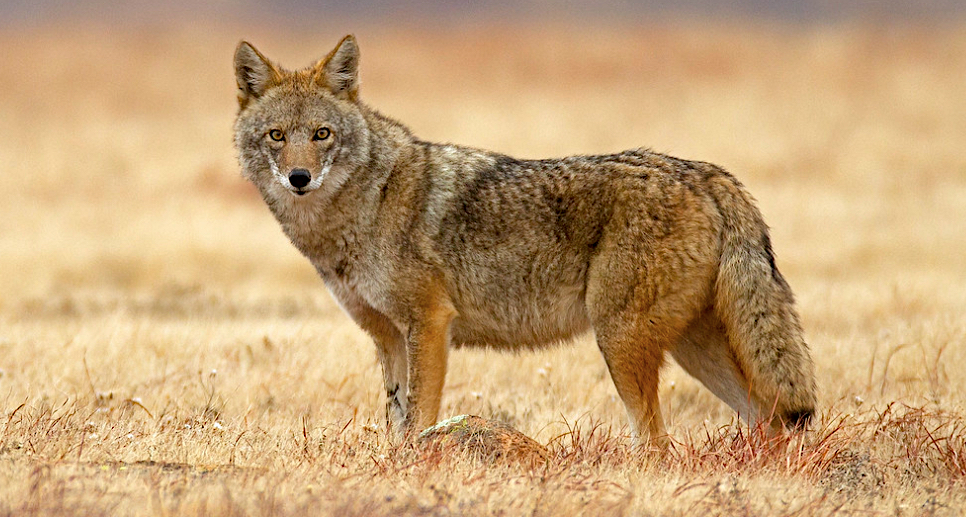Source: Oklahoma Department of Wildlife Conservation | March 3, 2020

Coyotes are opportunistic predators and have adapted to many habitats, which can lead to more coyote sightings and related conflicts in some areas.
While coyotes mainly feed on mice, squirrels, rabbits, gophers, deer, some fruits, and carrion, some coyotes will take advantage of an opportunity to prey on small livestock and poultry. However, there are many methods available to address conflicts that might arise due to coyotes.
“We recognize the hard work and the great contributions of farmers and ranchers across the state, and we are eager to help them take care of any wildlife-related issues on their property,” said J.D. Strong, director of the Oklahoma Department of Wildlife Conservation. “I encourage landowners to call their local game warden if they are experiencing problems with coyotes, and we’ll be happy to work through those issues with them on things like night-hunting permits, depredation permits or in connecting them with licensed nuisance wildlife control operators.”
Depredation permits are issued by game wardens for agricultural damage or threat of damage to livestock of some type. Permit holders can use rifles, night-vision equipment, thermal scopes or snares (with a 10-inch stop). These depredation permits are good for up to one year or a set amount of time agreed to by the game warden and landowner, as some only want the permits during spring or fall calving seasons. Coyotes taken under this permit can be sold or traded. Property owners should be aware that some municipalities have more restrictive laws for firearms use within city limits.
Oklahoma landowners can also kill coyotes at night with a shotgun and light by requesting a night-hunting permit from any Oklahoma Department of Wildlife Conservation game warden. Shotguns with size 6 shot or smaller are legal means of take for these 24-hour night-hunting permits for coyotes.
Those who are having problems with coyotes affecting ranching or farming operations may also contact the wildlife services division at the Oklahoma Department of Agriculture, Food and Forestry for help in dealing with the situation. In some circumstances, ODAFF agents can come to the property to assist landowners with coyote problems. Those agents use a variety of control methods such as trapping, aerial shooting, and calling coyotes into firearms range. To contact ODAFF Wildlife Services Division, call (405) 521-4039.
Oklahoma has an open hunting season year-round for coyotes, with no daily, season or possession limits. Hunters need only a hunting license to take coyotes with any legal firearms or archery equipment at any time during daylight hours. Landowner or agriculture lessees do not need a hunting license when hunting on their own property.
Coyote trapping is legal throughout the year. Trappers are required to have a state hunting license and a state trapping license, unless exempt.
For more information, visit the Oklahoma Department of Wildlife Conservation.
